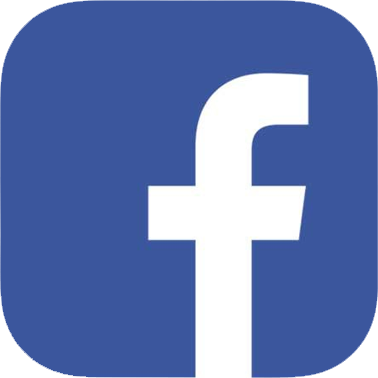Treatment of diabetes is a growing concern in the United States. In addition to being a significant challenge for individual patient management, diabetes is a burden on the healthcare system’s resources, especially its primary care physicians (PCPs). Thirty-four million people have diabetes (the overwhelming majority have type 2 diabetes), and 90% of patients with diabetes are cared for in primary care. Since the number of people with diabetes far exceeds the limited endocrinologists to care for them, it is likely that PCPs will continue to be the primary care managers for diabetes for the foreseeable future. PCPs need accurate and easy-to-use tools that help patients with blood glucose management and are an educational aid for providers. The strategic introduction of continuous glucose monitoring (CGM) into primary care practice can serve as both.
Currently, most patients with type 2 diabetes use fingerstick checks and HbA1c levels to monitor their diabetes control. However, fingerstick monitoring has limitations. HbA1c is an average, which can be derived from a variety of glucose patterns, including a pattern of consistent glucose points or conversely, a pattern of widely spaced points. Fingersticks provide a static snapshot of blood glucose levels and do not account for fluctuations between tests. A patient’s HbA1c value and their fasting fingersticks could be within range, but the patient may be experiencing dramatic changes in blood glucose levels throughout the day.
To illustrate this challenge, researchers in a 2017 study of 83 senior adults with type 2 diabetes who were on insulin, used a blinded CGM and found that 68 of the participants had episodes of nocturnal hypoglycemia which were unknown prior to the study. Hypoglycemia can increase the risk of cardiac complications such as arrhythmias due to an increase in peripheral systolic blood pressure, a fall in central blood pressure, and increased heart rate.
In addition to providing useful insights, such as discovering nocturnal hypoglycemia, CGM can help patients transition from oral agents and other injectables to insulin as their primary therapy method. It can also inspire patients to improve self-care behaviors, a barrier that many PCPs encounter when treating patients.
According to the American Diabetes Association, the following benefits are associated with introducing CGM to patients with type 1 or type 2 diabetes:
- Insight into nocturnal blood glucose patterns
- Initiation of basal insulin (when necessary)
- Understanding of when to initiate mealtime (prandial) insulin
- Understanding of how food affects blood glucose (i.e., how meals with various macronutrient ratios affect blood glucose profiles over the course of 24 hours)
- Increased patient accountability, which in turn improves patient self-care behaviors
Integration Considerations
As with any innovative technology, when adopting CGM, there is an associated learning curve for providers and patients, as well as resource allocation and financial considerations. PCPs are already under extreme time constraints and many have limited ancillary medical staff which can impact the incorporation of CGMs into their workflow. Luckily, there are a variety of resources that can ease CGM integration into primary care practices.
On the financial side, publicly available podcasts and guides can help providers navigate the ever-changing world of billing and insurance coverage. The use of specific CPT codes and online resources can reduce the overall burden of CGM integration on providers.1,2,3,4 With regards to training and sensor placement, with professional CGMs, an individual nurse or medical assistant can learn the complete process of sensor placement, calibration, patient training, and device removal. Alternately, providers can arrange for group trainings directly from the medical device company, which offers support for nurses, medical assistants, and even patients for a lower overall training cost.
Whether professional or personal, all CGM devices generate retrospective reports. These reports can be used to help the clinician and patient work together to identify and manage problem blood glucose patterns. To use CGMs’ to their fullest extent, it is important that PCPs can read and understand the data generated by their reports. The Ambulatory Glucose Profile (AGP) report, developed by the International Diabetes Center, is recognized by the American Diabetes Association as standard of care for reporting CGM data. Included in the ambulatory profile are a variety of statistics and graphics that give the clinician an overall picture of a patient’s glucose control over a specified timeframe. Several papers have been published discussing in more detail how to employ the AGP in clinical practice.1,2,3
There are also barriers that come with integrating new technologies into a clinician’s existing workflow. Device manufacturers have created guides and trainings to ease the burden, however, the provider must accept the added responsibility of using CGM as a tool to deliver better care to patients. Dr. Thomas Grace, Director and Physician at the Blanchard Valley Diabetes Center specializing in family medicine, experienced this initial barrier when implementing CGM into his practice, but has become an advocate and champion for its use in primary care medicine after seeing the clinical impact CGM had on patients. “The process (for obtaining CGM) was previously more burdensome but has become really simple. Now, I write a prescription to either a physical pharmacy or a (Durable Medical Equipment) supplier and the prescription gets filled. Clinically, it has been overwhelmingly successful to see the big improvements that patients experience using this technology. Some patients are speechless about how much better they can control their diabetes when they can continually see their blood sugars.”
Many clinicians believe that CGM must be fully integrated and implemented across all patients within a practice, requiring a dramatic change in routine behavior for providers which can cause undue stress and anxiety. But Deborah Greenwood, PhD, Former President of the American Association of Diabetes Educators, reminds PCPs that CGM can “replace limited data with more useful data.” Furthermore, implementing CGM does not need to be an all-or-nothing endeavor. Dr. Greenwood recommends that if providers are hesitant to incorporate CGM across all patients, start by introducing the device to a subgroup of interested patients. This allows the patients to identify issues and measure the impact of their choices, activities, and medications, and it allows providers an opportunity to get a sense of the challenges and opportunities of integrating CGM into their practice.
A 2018 study found that patients not only preferred flash glucose monitoring to fingerstick, but also felt less frustrated living with diabetes than the comparison group who only used self-monitoring of blood glucose. Today’s CGMs are easy for patients to set up and use and just interpreting the real-time data on their own can be of significant benefit for many patients. CGM can fully empower patients on their self-management journey while remaining a low burden on clinicians and their practices.
The march toward a primary care system where CGMs are a standard tool for achieving glycemic control is already happening. The Center for Medicare and Medicaid Services (CMS) and other commercial insurers now entirely or partially covered the use of CGMs for patients with type 2 diabetes. Additionally, some intermittent CGMs cost about $75.00 per month, out of pocket, making them affordable for some people living with type 2 diabetes. As a result, more and more patients will begin to transition away from solely pricking their fingers to using their phone or electronic devices as tools to monitor their blood glucose levels. Given that primary care is likely to continue to be the place where most patients receive treatment for the diabetes, PCPs can help speed up the effective adoption of CGM and join their endocrine colleagues in helping patients make the most of this exciting and useful technology.
Like all devices and interventions, CGM is not appropriate for everyone. To learn more about the benefits and who might be good candidates for CGM, please read previous posts in this series: Part 1: Why Silver Fern Healthcare added CGM to its Type 2 Diabetes Program; Part 2: Who May Not Be a Good Candidate for CGM?; and Part 3: Who Will Benefit Most from CGM Adoption?
—
Nora Saul is a Registered Dietitian and Certified Diabetes Care and Education Specialist. Nora has more than 25 years of experience in the field of diabetes education, consulting for the Joslin Diabetes Center and other industry partners. Nora leads content development for Silver Fern’s diabetes products and training.





